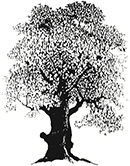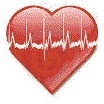Benno Moiseiwitsch
Weber: Invitation to the Dance. Benno Moiseivitch, pianist. Victor Red Seal 18050, 12- inch 78.

Benno Moiseiwitsch
Moisevitch had a very playful type of piano artistry and joy in the pieces he chose to perform. The Weber Invitation has always been loved for its graceful opening depiction of somebody being asked to danced and then the jubilant dizzying waltz itself. Whether in this solo piano original scoring of Carl Maria von Weber or the brilliant orchestration of the genius father of 19th century romanticism, Hector Berlioz, it has a timeless beauty and charm. BTW, a good orchestral performance is the one of the quick tempered genius Maestro Arturo Toscanini and his finely honed NBC Symphony of the late ‘40s into the early ‘50s, also recorded by Victor Red Seal.
A number of other good piano versions include ones of Artur Schnabel and Leon Fleisher along with the Berlioz transcription conducted by Fritz Reiner and Eugene Ormandy.
Invitation to the Dance is also considered the first piece intended by its composer to be listened to, rather than for dancing.
During the 1940s, Benny Goodman based the theme of his radio broadcast series on this music.
Moriz Rosenthal
Chopin Preludes, Waltzes, etc. Pianist Moriz Rosenthal. Victor Red Seal M-338, four twelve-inch 78s .
Pianist Rosenthal had a nasty streak of sarcasm in his personality but his performances of selected Waltzes and Preludes from the unsurpassed poet of the piano Frederic Chopin, like those of such keyboard wonders as Arthur Rubinstein, Alexander Brailowsky, Ivan Moravec, Alfred Cortot and Maria Joao Pires, convey the unearthly range of emotion- joy, sorrow, melancholy, whimsicality etc. – that Chopin communicated through his one chosen instrument.
Castine Maine’s record critic David Hall (1916-2012) commented in one of his 4 Record Book volumes that, in order to get a true picture of Chopin’s genius, one needed to listen to every single one of his piano pieces, even the trivial ones. I agree that it is a worthwhile goal, although I have never had the stamina for the listening sieges he did (In a private 1985 interview at his house in Wilton, Connecticut, just before he sold it to move permanently to his summer place in Castine, he told me of doing weekly six-hour binges on Sunday of recordings for his reviews because he was otherwise working six days a week as Curator of the Rodgers and Hammerstein Archive of Recorded Sound at NYC’S Lincoln Center before his retirement the year of our visit.).
My all time favorite Chopin works however remain the 24 Preludes and 2nd Piano Concerto.
Anne Sophie-Mutter
Vivaldi 4 Seasons and Tartini’s Devil’s Trill Sonata. Anne-Sophie Mutter, violinist and conductor of the Trondheim Soloists. Recorded 1999. Deutsche Grammophon 2894632592, compact disc.
Anne Sophie-Mutter collaborated with Maestro Herbert von Karajan (1908-1988) and the Berlin Philharmonic on a very good record of the Mozart Violin Concertos 3 and 5 , also on Deutsche Grammophon, back in 1977 when she was only 14 years old. And her playing was not merely that of a child prodigy flash in the pan but of a mature artist and musician, that record still making for worthwhile listening. Finally, to me personally, anything conducted by Karajan is worth hearing and owning.
The above 1999 CD has Anne-Sophie both playing and conducting six string instrumentalists and a harpsichordist in truly galvanizing performances of Antonio Vivaldi’s most well-known composition and the fiendishly difficult, aptly named Devil’s Trill Sonata of Giuseppe Tartini.
From 2002 to 2006, Mutter was the fifth wife of the late Andre Previn (1929-2019).
Pablo Casals
Conversations with Casals, by J. Ma. Corredor, translated from the French by Andre Mangeot. Published 1956 by Dutton Paperbacks.
Cellist Pablo Casals (1876-1973) married his third wife Marta Martinez in 1957 when he was 80, she 20. To those who commented about the age discrepancy, he replied, “I look at it like this. If she dies, she dies.”
He made numerous records as both cellist and conductor between the acoustic early 1900s and just a couple of years before his death in 1973 at the age of 97, setting new standards for the cello as a solo instrument. His most well known recordings include the 1930s Bach Cello Suites and Dvorak Cello Concerto, itself done with the Czech Philharmonic led by George Szell, in Prague, in 1937, just before the Nazi takeover. I also own a really good World War I acoustic Columbia shellac of him playing Camille Saint-Saens The Swan from Carnival of the Animals and several very early 1950s Columbia Masterworks LPs of him conducting music of Bach that were recorded at his summer music festivals in the mountain villages of Prades and Perpignan.
Casals appeared in a 1958 documentary film Windjammer depicting the voyage of a sailboat in its voyage from Oslo, Norway, to various ports including Portsmouth, New Hampshire. For a number of years during the 78s era, he was part of an all star trio recording chamber music of Beethoven, Schubert etc., with violinist Jacques Thibaud (1880-1953, who perished in a plane crash) and the phenomenal legendary French pianist Alfred Cortot (1878-1962).
Casals was involved in later years with the Puerto Rico and Marlboro Vermont summer music festivals.
In Conversations, author and long time friend Corredor talks with Casals about composers, performance and life experiences. One question is as follows:
“I read somewhere that when you first went to America, some impresarios were rather shocked to see a young performer nearly bald, for it was very much the fashion for musical virtuosos to wear long hair in those days!”
Casals: “Yes, one of these impresarios actually told me that he would raise my fee considerably if I agreed to wear a wig during the concerts. ”
A rumor spread during those youthful years that some impresario publicly announced that Casals was prematurely bald because he gave a lock of hair as a souvenir to all of his girlfriends attending the concerts.
 by Rix Quinn
by Rix Quinn




 (NAPSI)—Migraine is a debilitating neurological disease that affects one billion people worldwide, but it is not just an adult disease. For the 1 in 10 children diagnosed with this complex and incurable condition, it can be a daily battle that affects academic performance, impacts friendships, and leads to diminished quality of life. And many struggle for years before receiving a proper diagnosis.
(NAPSI)—Migraine is a debilitating neurological disease that affects one billion people worldwide, but it is not just an adult disease. For the 1 in 10 children diagnosed with this complex and incurable condition, it can be a daily battle that affects academic performance, impacts friendships, and leads to diminished quality of life. And many struggle for years before receiving a proper diagnosis.







 Ninety years ago today, the Social Security Act was signed into law, marking a watershed moment for our country by providing American workers with a foundation for their financial security and dignity in retirement.
Ninety years ago today, the Social Security Act was signed into law, marking a watershed moment for our country by providing American workers with a foundation for their financial security and dignity in retirement.